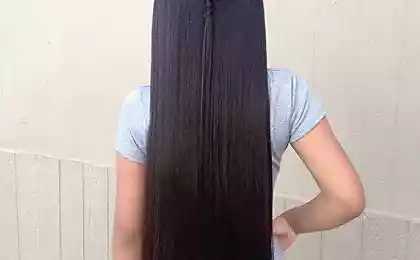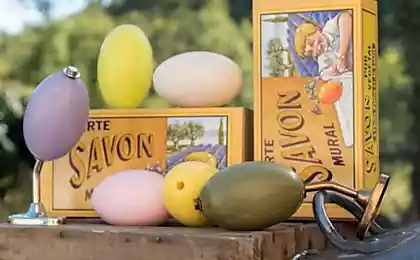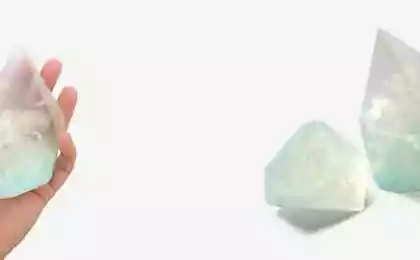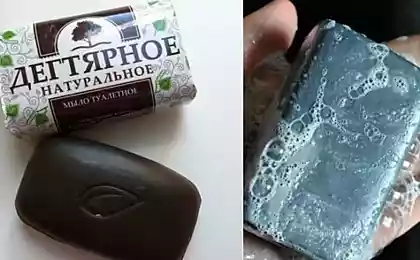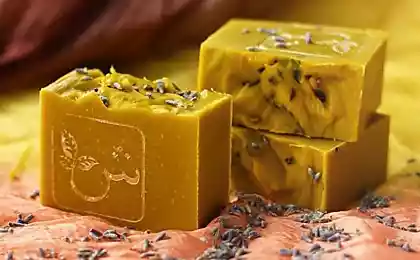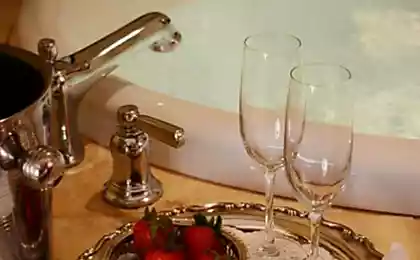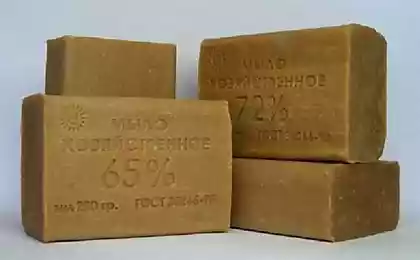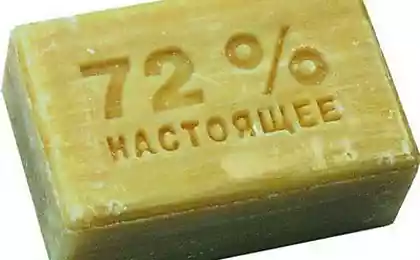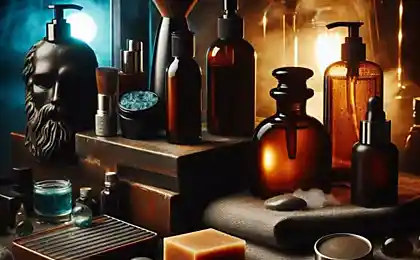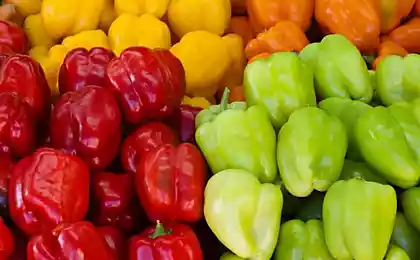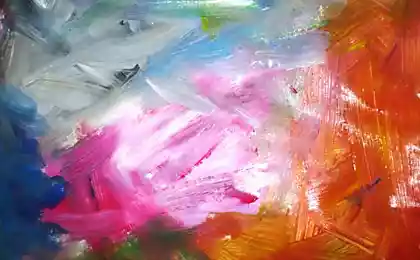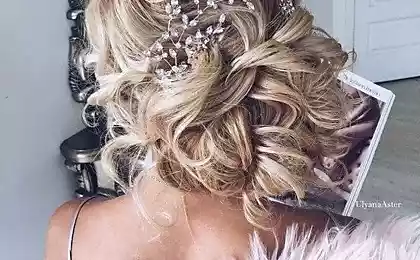144
Children's tears came to an end when the Bulgarian baby shampoo "Krya-krya" appeared on the shelves
Those who grew up in Soviet families remember perfectly well how their parents arranged bath days for them on weekends. After a thorough bath, the mother wrapped the child in a terry sheet, and the father carried the hot “roulette” to the bed. There, the child, shrouded in freshness, gradually dried up and basked in the smells.

If you ask the older generation about the hygiene of those times, they may remember that shampoos were often produced in glass bottles or containers. The structure of these shampoos were liquid and poorly foamed. The names were simple and exclusively in Russian: “Forest”, “Ivushka”, “Baby”, “Hope” or “Tatiana”. And when soaping the head, it was extremely important to close your eyes so that the foam did not get into the eyes. Since these shampoos were based on saponified salts of fatty acids (which in fact makes them a liquid soap), the reaction of the eyes was unpleasant, especially for children who complained that they were “stinging”.
View this post on Instagram
A post shared by Antique shop Irkutsk (@antik_lavka38)
There were also concentrated shampoos in metal tubes. For example, "Yellow", which is still produced. And also "Egg" in portion pads. However, since the opening of the Moscow factory "Freedom" packaging has become plastic.
Someone also used Verbena and Selena. Since they were based on sulfates, these shampoos did not pinch the eyes as much.
But children’s tears came to a true end when the famous Bulgarian children’s shampoo “Krya-krya” appeared on the shelves.
View this post on Instagram
A post shared by The Unforgotten Soviet Union (@ussr_nostalgi)
Until the 60s on the territory of the USSR, people used tooth powders for cleaning teeth, based on chalk and various chemical additives. Sometimes they added oils of mint, anise or cloves. And due to the abrasive properties of the powder, people used it not only for the oral cavity, but also for cleaning silverware.
View this post on Instagram
A post shared by Vintage. Packaging. Design (@vintage_retro_story)
The pastes appeared a little later. Among them were Pearls, Forest, Extra and Mint. There was also a therapeutic paste for the gums “Forest Balm”, and for children there were delicious “Children’s”, “Orange” and “Cheburashka”.
View this post on Instagram
A post shared by Vintage. Packaging. Design (@vintage_retro_story)
Soap USSR View this post on Instagram
A post shared by Photos. (@pofotografiiam)
There were few restrictions in the choice of toilet soap (“Bath”, “Flower”, “Earthly”). The lowest price for 100 g was 10 kopecks, and applications for it are more than enough. Starting from direct use and ending with the use to create patterns or storage with bed linen for the freshness of the smell. For such purposes served "Alyonushka", "Riga" and "Ballet". And as part of gift sets for 60 kopecks for men, you could find “Arbat”.
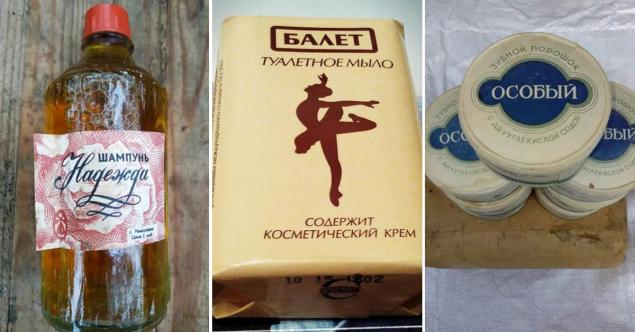
But the main soap of the USSR was and for some still remains - economic. Despite the smell, which many from childhood do not like, it can be used everywhere: for washing, for washing hands and head (before chemical perm this was a prerequisite). It can be used instead of a detergent for washing dishes, as well as as an antiseptic for wounds. And those are not all options.
No matter what good properties these or other means have, everything has its downside. Therefore, when choosing a hygiene product, it is very important to familiarize yourself with all the components. What shampoos, soaps or toothpastes can you name?
Share it with us!
Photo in article

If you ask the older generation about the hygiene of those times, they may remember that shampoos were often produced in glass bottles or containers. The structure of these shampoos were liquid and poorly foamed. The names were simple and exclusively in Russian: “Forest”, “Ivushka”, “Baby”, “Hope” or “Tatiana”. And when soaping the head, it was extremely important to close your eyes so that the foam did not get into the eyes. Since these shampoos were based on saponified salts of fatty acids (which in fact makes them a liquid soap), the reaction of the eyes was unpleasant, especially for children who complained that they were “stinging”.
View this post on Instagram
A post shared by Antique shop Irkutsk (@antik_lavka38)
There were also concentrated shampoos in metal tubes. For example, "Yellow", which is still produced. And also "Egg" in portion pads. However, since the opening of the Moscow factory "Freedom" packaging has become plastic.
Someone also used Verbena and Selena. Since they were based on sulfates, these shampoos did not pinch the eyes as much.
But children’s tears came to a true end when the famous Bulgarian children’s shampoo “Krya-krya” appeared on the shelves.
View this post on Instagram
A post shared by The Unforgotten Soviet Union (@ussr_nostalgi)
Until the 60s on the territory of the USSR, people used tooth powders for cleaning teeth, based on chalk and various chemical additives. Sometimes they added oils of mint, anise or cloves. And due to the abrasive properties of the powder, people used it not only for the oral cavity, but also for cleaning silverware.
View this post on Instagram
A post shared by Vintage. Packaging. Design (@vintage_retro_story)
The pastes appeared a little later. Among them were Pearls, Forest, Extra and Mint. There was also a therapeutic paste for the gums “Forest Balm”, and for children there were delicious “Children’s”, “Orange” and “Cheburashka”.
View this post on Instagram
A post shared by Vintage. Packaging. Design (@vintage_retro_story)
Soap USSR View this post on Instagram
A post shared by Photos. (@pofotografiiam)
There were few restrictions in the choice of toilet soap (“Bath”, “Flower”, “Earthly”). The lowest price for 100 g was 10 kopecks, and applications for it are more than enough. Starting from direct use and ending with the use to create patterns or storage with bed linen for the freshness of the smell. For such purposes served "Alyonushka", "Riga" and "Ballet". And as part of gift sets for 60 kopecks for men, you could find “Arbat”.

But the main soap of the USSR was and for some still remains - economic. Despite the smell, which many from childhood do not like, it can be used everywhere: for washing, for washing hands and head (before chemical perm this was a prerequisite). It can be used instead of a detergent for washing dishes, as well as as an antiseptic for wounds. And those are not all options.
No matter what good properties these or other means have, everything has its downside. Therefore, when choosing a hygiene product, it is very important to familiarize yourself with all the components. What shampoos, soaps or toothpastes can you name?
Share it with us!
Photo in article
Flying through the Italian supermarket, noticed the sale of cheese crusts and was very surprised
How to shave off a daughter-in-law who complains about her son


